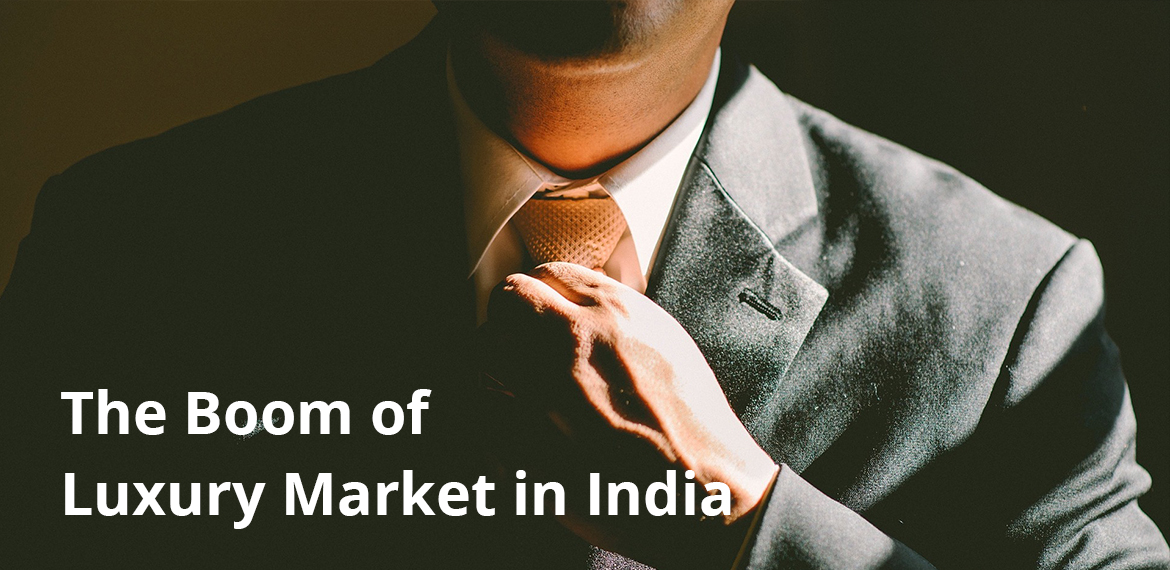This is a generation of millennials where people prefer pleasure and indulgence rather than just possessions. And that defines luxury. Luxury is anything that adds to pleasure or comfort and is more than just a necessity. In modern context, luxury is any expenditure that goes beyond the necessary.
With time however, the term ‘luxury’ has evolved. Luxury can also be an experience that simply makes one feel good or special. Luxury to different people can mean different things. To some, hiring a full-time domestic servant may be a luxury and for others, a comfortable stay at a branded hotel may be a luxury.
In this article, however, we will talk about the luxury goods from an economic point of view. We will also talk about luxury brands, luxury market scene in India, global luxury brands in India, luxury management and the career prospects in the luxury segment.
What are luxury goods and luxury brands?
Luxury goods are often synonymous with superior goods and they are generally considered to be goods at the highest end of the market in terms of quality and price. Haute culture clothing, accessories, and luggage are some examples of classic luxury goods. Luxury goods often indicate status and hence, sometimes are also called ‘positional goods’ as they indicate the owner’s position in society.
Some luxury goods may perform a function similar to ordinary goods but may possess high levels of craftsmanship, advanced design, superior quality components, or other improvements. Luxury car brands like Porsche function the same way as other cars but boasts of greater performance and comfort.
If for any brand, a majority of its products are luxury goods, it is labelled as a luxury brand. They are known to deliver superior experience at two levels- product and experiential. At the product level, they satisfy the functional aspects like craftsmanship, precision, materials, unique design, extraordinary product capabilities, technology and innovation. Appealing to the emotions of the consumers is its offering at the experiential level. For example, Rolex symbolises heroic achievement while Tiffany symbolises love and beauty. Surprisingly, most luxury brands have a rich pedigree and extraordinary history.
With more than 50 brands under its hat, LVMH (Louis Vuitton Moet Hennessy) is the world’s largest luxury good producer.
What is the luxury market scene in India?
The luxury segment in India is flourishing due to the growing ‘brand consciousness’ among people, rise in the number of internet users, and a growing young working population. According to ASSOCHAM, the Indian luxury market is valued at $18.5 Billion and is expected to reach more than $100 Billion in the next 7-8 years.
India’s number of Ultra High Networth Individuals (UHNWI) are also growing impressively and by 2025, is anticipated to account for 6% of global billionaire population. Among the metropolitan cities in India, Mumbai and Delhi have the maximum number of UHNWI but it is interesting to note that the Tier I and Tier II cities represents 45% of the total luxury market.
When it comes to luxury spends, India is ahead of Turkey, Thailand, and Argentina and is progressing faster than Singapore and Australia. Being the second-fastest growing economy in the world, India is believed to be one of the most sought-after market by the luxury brands. Currently, India contributes around 1-2 % to the global luxury market and in the last few years, the sale of luxury goods in India grew faster in comparison to other countries.
Which are the global brands investing in India?
India, with its rich fashion history of bright colours, exotic saris, elegant embroidery, and stunning jewellery has been an inspiration for designers around the world. Hence, many international luxury brands are queuing up to woo Indian consumers because they recognize the potential of the market owing to the growing number of billionaires and the rise of the urban elite class.
The Indian luxury consumer base is advancing and with the 100% FDI approval in single-brand retailing and 50% in multi-brand retailing, a lot of international luxury brand companies are strategizing their business operations in the Indian market. Brands like Louis Vuitton, BMW, Audi, Mercedes, etc. who already have a presence in the Indian luxury segment are looking at further expanding their business and increasing their investments.
In the Indian luxury apparel section, the current global players are Hermes, Louis Vuitton, Gucci, Chanel, Jimmy Choo, Burberry, Dior, Bvlgari, Christian Louboutin, Fendi, Giorgio Armani, Versace, DKNY, Diesel, TOD’s, Tom Ford, Roberto Cavalli, Forever 21, Mango, and many more.
Career prospects in the luxury segment
Due to its exponential growth, the luxury segment offers diverse and exciting set of employment opportunities for anyone who is well-versed with the luxury industry. With the demand for luxury products increasing by day, not just businesses but even educational institutions are eager to serve the luxury industry by providing them with skilled workforce.
Some of the roles that the luxury industry can offer are – Luxury Brand Manager, Luxury Sales Advisor, Luxury Retail marketing Executives, Visual Merchandisers, Customer Relationship Manager, Store Manager, Store Director, Area Manager, Retail Head, Brand Head, and Fashion Marketer.
Why do an MBA in Luxury Management?
Luxury Management is all about conducting market research for target products, overseeing and organising advertising campaigns, managing brand budgeting and resources, collaborating with luxury designers, and supervising marketing assignments.
India is the emerging hub of luxury which would demand professionals to manage the luxury business to provide the highest level of service to clients who want to own the best based on personal preference while maximizing the social currency. And who knows better about luxury but the French? Paris, being the luxury capital of the world is the birthplace of luxury brands like Christian Dior, Coco Chanel, Louis Vuitton and Ives Saint Laurent etc.
MBA ESG that hails from Paris, offers an MBA in Luxury Management that will equip future managers with superior insights and hands-on exposure in the luxury domain.
Join now to live and breathe luxury!

